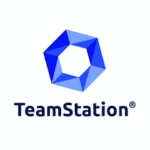How Much Do Employee Leasing and PEO Cost in 2024?
A Guide to Buying PEO Services, Employee Leasing Pros and Cons, and Best Companies – Compare The Cost
Employee leasing typically costs between $700 – $5,600 for setting up plus ongoing fees according to your payroll needs, typically averaging 3.5%-4%.
What Determines Pricing For PEO – Employee Leasing?
When discussing the pricing for PEO (Professional Employer Organization) in the context of employee leasing, several key factors come into play. Here’s a structured breakdown:
Determinants of Pricing for PEO – Employee Leasing
- Scope of Services
- Payroll Administration
- Frequency of payrolls
- Number of employees
- Human Resources Management
- Level of HR support needed
- Compliance and legal assistance
- Benefits Administration
- Type and range of benefits offered
- Employee enrollment management
- Payroll Administration
- Industry and Risk Management
- Type of Industry
- Industries with higher risks may have higher costs
- Workers’ Compensation
- Claims history
- Safety programs in place
- Type of Industry
- Employee Count and Demographics
- Total Number of Employees
- Larger organizations may get bulk discounts
- Employee Demographics
- Age, location, and job roles can influence costs
- Total Number of Employees
- Geographic Location
- State and Local Regulations
- Different states have varying laws and tax rates
- Market Competition
- Local market conditions and competition
- State and Local Regulations
- Customization and Additional Services
- Customization of Services
- Tailoring services to specific company needs
- Advanced HR Technology Solutions
- Integration with existing systems
- Access to advanced HR software
- Customization of Services
- Contract Length and Terms
- Duration of the Agreement
- Longer contracts may lead to better pricing
- Termination Clauses
- Flexibility and terms of ending the agreement
- Duration of the Agreement
- Economies of Scale
- Larger PEOs may offer more competitive rates
- Access to a wider range of benefits at lower costs

Each of these factors plays a crucial role in determining the pricing structure for a PEO service in the context of employee leasing. It’s essential for businesses to consider these aspects when evaluating different PEO providers to ensure they receive the best possible service at a competitive price.
COMPARE QUOTESWhat to Look for in a PEO or Employee Leasing
When considering a Professional Employer Organization (PEO) or employee leasing, it’s important to understand their differences and key aspects to look for.
Understanding Employee Leasing and PEOs
Employee Leasing:
- Employee leasing typically involves a temporary arrangement where businesses quickly access new workers for specific projects or to cover for regular employees during absences.
- The leased employees are legally employed by the staffing company, meaning your business won’t handle HR-related duties for these workers.

Professional Employer Organizations (PEOs):
- PEOs are often mistaken for staffing agencies but serve a different function. PEOs enter into a co-employment arrangement with your business.
- In this arrangement, the PEO handles all human resources functions and assumes associated risks and responsibilities, while your business retains control over hiring, managing, and firing employees.
Key Considerations When Choosing a PEO
- Services Provided: Understand what specific services the PEO offers. This can range from payroll management to HR services. Knowing what you’re paying for is essential to ensure it aligns with your business needs.
- Employee Benefits: Evaluate the benefits package offered by the PEO. It should be competitive and align with your employees’ needs and lifestyles.
- Training and Professional Development: Some PEOs offer training and professional development opportunities for your employees, which can be a valuable asset.
- Level of Service: Ensure that the PEO provides accessible and responsive support for employment matters, including a designated person for your account.
- Technology and Software: Assess the user-friendliness and functionalities of the technology or software provided by the PEO. Good software can facilitate payroll and tax documentation access for your employees.
- PEO’s Expertise: Check the PEO’s expertise in HR processes, recruitment strategies, and onboarding new employees.
Deciding Between PEO and Employee Leasing
- Choose a PEO if you seek a long-term partnership to offload HR responsibilities, payroll, benefits, and compliance liabilities.
- Opt for employee leasing if you need temporary staffing solutions for specific projects or short-term needs.
Both options offer unique advantages, and the choice depends on your business’s specific requirements and the scale of your HR needs. For detailed guidance and more nuanced comparisons, it’s advisable to consult directly with PEOs or employee leasing firms to understand how their services can specifically benefit your business
Top 7 Employee Leasing Companies (and costs)
TeamStation (San Diego, United States):

Known for revolutionizing the nearshore IT staff augmentation industry, TeamStation offers a dynamic range of services in technology. Their team size varies between 50-249, and they charge an hourly rate of $30-70/hr.
TeamStation Employee Leasing, like many employee leasing services, offers a variety of benefits and some potential drawbacks. Here’s a general overview:
Pros:
- Administrative Relief: TeamStation Employee Leasing can take over a significant portion of administrative tasks related to employees. This includes payroll processing, benefits administration, and compliance with labor laws. For businesses, especially small and medium-sized enterprises, this can free up valuable time and resources.
- Cost-Effective Benefits Management: Through employee leasing, businesses often gain access to a wider range of employee benefits at a more cost-effective rate than they could secure independently. This is due to the leasing company’s ability to pool employees from multiple companies, gaining leverage to negotiate better rates for health insurance, retirement plans, etc.
- Expertise in Compliance and HR Issues: TeamStation likely has expertise in complex HR areas and stays updated on the constantly changing landscape of employment laws and regulations. This can provide businesses with a higher level of compliance and reduced risk of legal issues related to employment.
Cons:
- Less Control over HR Functions: While outsourcing HR functions brings many benefits, it can also mean less direct control for the business over these aspects. This might be a concern for companies that have specific ways they want to handle HR tasks or unique company cultures they want to preserve.
- Dependency on the Leasing Company: There’s a degree of dependency that develops on the employee leasing company. If the service quality decreases or if there are disagreements, it might affect the business operations. Also, transitioning away from a leasing arrangement, should the need arise, can be complex and time-consuming.
Remember, these are generalized pros and cons and can vary based on the specific offerings and capabilities of TeamStation. It’s important for businesses to evaluate these factors in the context of their specific needs and circumstances.
COMPAREHashe Computer Solutions (Pvt) Ltd. (Indianapolis, United States):

Established in 1998, Hashe Computer Solutions focuses on IT innovation and excellence. They are a mid-sized company with a team of 10-49, offering services at $35-70/hr.
Hashe Computer Solutions, like many other companies offering employee leasing services, presents various pros and cons. Here’s a general list based on common characteristics of employee leasing services:
Pros:
- Cost-Effectiveness: By leasing employees through a company like Hashe Computer Solutions, businesses can often reduce costs associated with hiring and training. They can also save on the expenses of maintaining full-time staff, such as benefits and taxes.
- Access to Expertise: Hashe likely offers access to a pool of skilled professionals. This allows companies to tap into a wider range of expertise and skills than they might have in-house, which is particularly beneficial for specialized or short-term projects.
- Flexibility: Employee leasing allows businesses to quickly scale their workforce up or down according to their current needs. This flexibility is especially useful for companies with fluctuating workloads or those undertaking projects with varying personnel requirements.
Cons:
- Less Control Over Staff: When employees are leased, the client company may have less control over these workers compared to their in-house staff. This can impact company culture and the integration of these employees into the team.
- Dependence on the Leasing Company: There’s a dependency on Hashe Computer Solutions (or any leasing firm) for the quality and reliability of the staff provided. If the leasing company doesn’t adequately vet its employees or if there’s a mismatch in skills, it can negatively impact the client’s projects and timelines.
It’s important to note that these are general considerations and the actual experience with Hashe Computer Solutions may vary depending on specific circumstances and the nature of the agreement with the company.
COMPAREOutbustech (Boulder, United States):

A software company providing a wide range of digital services, Outbustech caters to business growth and audience reach. They have a smaller team of 10-49 professionals and offer services for less than $30/hr.
Outburstech Employee Leasing, like any business model, has its advantages and disadvantages. Here are three pros and two cons to consider:
Pros:
- Cost Efficiency: By leasing employees, companies often save on costs associated with hiring and training new staff. The leasing company typically handles payroll, benefits, and human resource functions, which can be more efficient and cost-effective for the client company.
- Flexibility: Employee leasing allows businesses to adjust their workforce quickly in response to changes in the market or project needs. This flexibility is particularly advantageous for companies that experience seasonal fluctuations or project-based workloads.
- Access to Expertise and Talent: Employee leasing companies often have a pool of qualified and experienced professionals. This gives client companies access to a broader range of skills and expertise than they might be able to afford or find on their own, especially for short-term or specialized needs.
Cons:
- Less Control Over Staff: While leasing employees, companies may have less control over the staff and their training compared to direct hires. The leased employees are technically employed by the leasing company, which can sometimes create a disconnect in company culture and loyalty.
- Dependency on the Leasing Company: There’s a risk of becoming overly dependent on the leasing company for workforce needs. If the leasing company fails to provide the right talent or faces its own operational issues, the client company may find itself in a difficult position.
It’s important to note that the specific pros and cons can vary based on the industry, the nature of the work, and the terms of the agreement with the employee leasing company.
COMPARELeeway IM (Florida, United States):

Specializing in ERP solutions, Leeway IM equips businesses with advanced technology. They have a compact team of 10-49 and charge $30-60/hr for their services.
Leeway IM Employee Leasing offers several advantages and disadvantages that are worth considering:
Pros:
- Reduced Administrative Burden: Leasing employees through Leeway IM reduces the administrative tasks such as managing payroll, unemployment insurance, compliance with regulations, and handling other HR-related paperwork. This allows businesses to focus more on strategic activities.
- Cost Savings: Employee leasing can save money for a company in various ways, such as eliminating the need to maintain unemployment insurance. This can be especially beneficial for businesses that don’t have a large number of employees.
- Access to HR Expertise: Small businesses often lack in-house HR expertise, which can put them at risk of compliance violations. Leasing employees from a company like Leeway IM provides access to HR professionals who are knowledgeable in employment issues.
Cons:
- Loss of Control: Using an employee leasing service means that some control over hiring, offering benefits, and other administrative tasks is relinquished to the leasing company. This could be challenging for businesses that prefer to be hands-on in their operations.
- Impact on Company Culture: With an external agency responsible for hiring and managing HR responsibilities, there might be less control over developing the company culture, which could negatively impact employee morale and productivity.
These points encapsulate the general advantages and disadvantages of employee leasing, though the specifics can vary depending on the individual business situation and the terms of the agreement with the leasing firm.
COMPAREAPOM Solutions (New Jersey, United States):

This international IT company offers out-staffing and outsourcing services, emerging from Ukraine. Their team size is between 10-49, and their hourly rate is $35-65/hr.
Employee leasing through a company like APOM Solutions can have various pros and cons depending on the specific context and needs of a business. Here’s a general overview:
Pros of APOM Solutions Employee Leasing
- Reduced Administrative Burden: One of the significant advantages of employee leasing is the reduction in administrative tasks related to human resources. Companies like APOM Solutions often handle payroll, benefits, and workers’ compensation, freeing up business owners to focus on core business activities.
- Access to Better Benefits: Smaller businesses often struggle to offer competitive benefits due to cost constraints. By pooling employees from multiple companies, APOM Solutions can typically negotiate better rates for health insurance, retirement plans, and other benefits, making the company more attractive to potential employees.
- Expertise in Compliance and Risk Management: APOM Solutions likely has expertise in employment law, tax regulations, and compliance issues, which can be invaluable for businesses without dedicated HR or legal departments. This can reduce the risk of legal problems related to employment.
Cons of APOM Solutions Employee Leasing
- Less Control Over Employees: When you lease employees, they technically work for the leasing company, not directly for your business. This arrangement can sometimes lead to less control over hiring, firing, and day-to-day management of these workers.
- Dependence on the Leasing Company: Relying on an external company for critical HR functions can create dependency. If the service quality of APOM Solutions decreases or if they change their terms of service, it could negatively impact your business operations.
Keep in mind that these pros and cons can vary based on the specific arrangements and terms of service provided by APOM Solutions, as well as the unique needs and circumstances of your business.
COMPARERevent Technologies (Delaware, United States):

Committed to empowering businesses with innovative software solutions, Revent Technologies has a medium-sized team (50-249) and offers services at $70-150/hr.
Revent Technologies’ Employee Leasing program, like any such program, comes with its unique set of advantages and disadvantages. Here are three potential pros and two cons:
Pros:
- Cost Efficiency: Employee leasing can often be more cost-effective than traditional hiring methods. By leasing employees through Revent Technologies, a company might save on the expenses associated with recruitment, training, and benefits administration.
- Access to Expertise: Revent Technologies may provide access to a pool of highly skilled and specialized professionals. This can be especially beneficial for businesses needing expertise in areas they lack internally.
- Flexibility and Scalability: Employee leasing allows companies to scale their workforce up or down according to business needs without the long-term commitments associated with hiring full-time employees. This flexibility can be vital in responding to market fluctuations or project-specific demands.
Cons:
- Less Control Over Staff: Leased employees may not have the same level of commitment or loyalty to the company as direct hires. Additionally, companies might have less control over the work and performance of leased employees since they are technically employed by Revent Technologies.
- Potential for Workplace Culture Challenges: Integrating leased employees into an existing team can sometimes create challenges in maintaining a cohesive workplace culture. These employees might not be as invested in the company’s long-term goals or may not mesh well with the permanent staff.
It’s important to note that the actual pros and cons can vary depending on the specific context of the business and the terms of the agreement with Revent Technologies.
COMPAREXtreme Technologies (Dallas, United States):
![]()
A leader in web and software design/development, Xtreme Technologies has a significant presence across major US cities. Their team size ranges between 50-249, with an hourly rate of $35-60/hr.
Xtreme Technologies Employee Leasing, like any business model, has its set of advantages and disadvantages. Here are three pros and two cons of this approach:
Pros:
- Cost Savings: Employee leasing through a company like Xtreme Technologies often leads to significant cost savings for businesses. It reduces the need for in-house HR departments, as the leasing company handles payroll, benefits, and other HR-related tasks. This can be especially beneficial for small to medium-sized businesses that may not have the resources to manage these functions effectively on their own.
- Access to Expertise and Technology: Xtreme Technologies may provide access to advanced technologies and specialized expertise that a business might not otherwise have. This can be particularly valuable in industries where staying up-to-date with the latest technology and practices is crucial for competitiveness.
- Flexibility and Scalability: Employee leasing allows businesses to scale their workforce up or down quickly, depending on their current needs. This flexibility is essential in industries with fluctuating demand. It enables companies to respond rapidly to market changes without the long-term commitment of hiring permanent staff.
Cons:
- Less Control Over Employees: When employees are leased, a business may have less control over them compared to direct hires. This can include aspects like company culture fit, specific job processes, and overall management style. The employees are technically employed by the leasing company, which can sometimes lead to a disconnect in employee loyalty and understanding of the business’s core values.
- Dependency on the Leasing Company: Relying on a company like Xtreme Technologies for a significant portion of your workforce can create dependency. If the leasing company faces issues such as financial instability or changes in management, it could directly impact the businesses that depend on their leased employees.
These points offer a general overview of the pros and cons of employee leasing with a company like Xtreme Technologies. Specific experiences may vary depending on the nature of the business, the industry, and the terms of the leasing arrangement.
Each of these companies brings its unique strengths and services to the table, catering to various needs in the employee leasing and PEO sector.
COMPARECalculating the Cost of Employee Leasing and PEO
The first thing you’re going to have to pay for when contracting a PEO is the setup of the service. This will cost anywhere from $1000 and $5500. The good news is that you will only have to pay this fee once for the duration of the time that you do business with the organization. After that initial fee, your payments will be based on the size of your payroll. The PEO will bill you a percentage of your payroll for the services they provide each month. Normally, this is going to be around 2%-6% of the amount that you are paying your staff for a very basic employee leasing program.
Find PEO Providers Near You and Compare Up To Five Money Saving Quotes
For a complete program that incorporates managed benefits, payroll services, and hiring programs, the fee may be as high as 15% of your gross payroll. Also keep in mind that for companies that pay very low salaries or that only hire a few employees, the percentages are likely to trend toward the higher end of the margin.
Top Providers of Employee Leasing Services – Professional Employer Organizations (PEO) Include: PayChex, Oasis, Staff Market

Employee leasing is a business strategy designed to provide companies with an alternative to traditional staffing models. It enables organizations to outsource their hiring and human resources functions while retaining direct control over operational decisions. Through employee leasing, employers are able to reduce labor costs and mitigate the risks associated with hiring full-time employees.
Strategies for Reducing Labor Costs With An Employee Leasing Agreement
Below, we have listed three great strategies to help you reduce your labor cost through an employee leasing agreement:
1) Hire Contract Workers: An employee leasing agreement allows employers to hire contract workers who are employed by a third-party provider. This can be used to reduce payroll costs since the employer does not have to pay taxes and benefits for these employees.
2) Optimize Staffing Levels: Employee leasing enables employers to quickly adjust staffing levels based on their needs. This allows them to staff up during peak periods and scale down when demand is low, helping to avoid over-staffing.
3) Reduce Training Costs: Employee leasing can reduce training costs since the third-party provider typically provides orientation and onboarding services for new employees. This eliminates the need for an employer to train new hires.
COMPARE QUOTES
